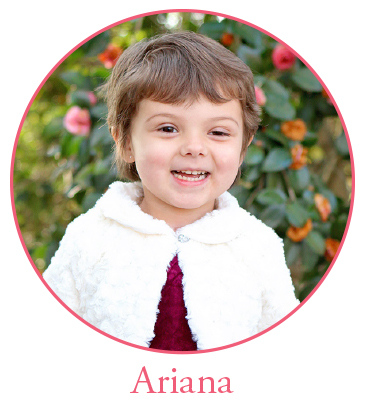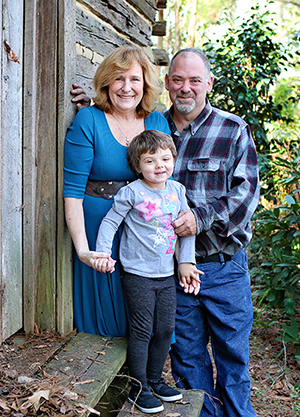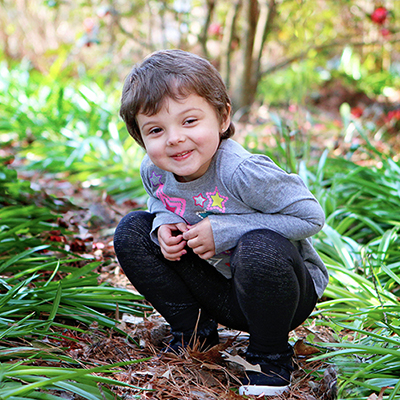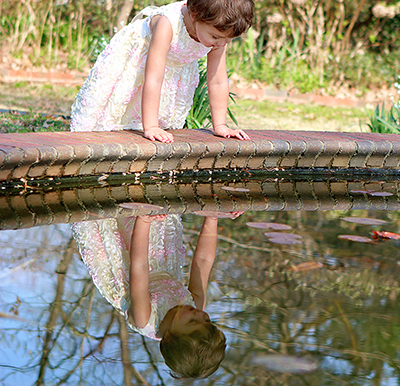Ariana Grosskopf
Preschooler Rallies From Accident That Left Her Near Death
 Sometimes, the little girl with the big smile will talk about it. She’s awfully chatty, after all. Shrouded in the blissful innocence of youth, she recounts her tale in the same offhand way that she’d tell you about, say, a trip to the toy store.
Sometimes, the little girl with the big smile will talk about it. She’s awfully chatty, after all. Shrouded in the blissful innocence of youth, she recounts her tale in the same offhand way that she’d tell you about, say, a trip to the toy store.
If it doesn’t come up in conversation, you’d have a tough time guessing what she’s been through. The scars have healed. The language has returned. She seems, in every way, like a normal preschooler.
Except for when she gets in the car with you.
Then, Ariana Grosskopf will look over and remind you to put your seatbelt on. She’ll tell every other passenger the same thing. And finally, she will lead a short prayer, asking God for a safe trip. Only at that moment does the driver have permission to start the engine.
Ariana is 4 years old. She prays because of a moment she can’t remember. A moment that her family will never forget.
‘Like a balloon’
The call came on a Wednesday morning, when Renee Miens was at work. There had been an accident on Route 31 in Spencerport—a truck had rear-ended the vehicle carrying her two daughters, sandwiching it between a third car ahead of them.
She raced to the emergency department at Golisano Children’s Hospital. When she arrived, she learned that her older daughter, 6-year-old Brooklynn, had escaped relatively unscathed. But Ariana, then 3 years old, was in bad shape.

Ariana’s face had taken the brunt of the crash impact. Her eye sockets were broken, and her forehead was fractured—the broken section of skull had been pushed back into her head by an inch. Her brain was likely damaged.
“They said they weren’t sure she was going to make it,” said Miens.
Doctors knew that they needed to fix her skull fractures, but first, Ariana had to be stable enough for them to operate. Ariana’s team in the Pediatric Intensive Care Unit, led by Susan Martin, MD, kept close watch around the clock, carefully monitoring the pressure inside her head.
Miens spent the first few days in the Ronald McDonald House, but regularly drove back and forth from their home in Albion, sometimes four times a day.
She knew she needed to also care for Brooklynn, who was still recovering mentally from the trauma of the crash.
Meanwhile, Ariana’s grandparents kept a vigil at the bedside.
“Her head looked like a balloon,” said Debbie Kasper-Miens, Ariana’s grandmother. “It was just really hard to see her like that.”
It took days for all the swelling to come down to the point that doctors could attempt surgery. But finally, a week after the accident, Clinton Morrison, MD, Chief of Pediatric Plastic Surgery; and Howard Silberstein, MD, Chief of Pediatric Neurosurgery; were able to operate.

First, John Faria, MD, pediatric otolaryngologist, performed a tracheostomy, allowing Ariana to have a clear airway during the procedure. Then, for the next six hours, Morrison and Silberstein worked to rebuild her face. Piecing her forehead and skull back together, the surgeons used a series of screws and plates to help keep everything in place. As Ariana’s bones heal, the hardware, made from a special type of polymer, will harmlessly dissolve over time, eliminating the need for a second surgery to remove them.
“It’s unusual for a child to have this bad of an injury,” said Morrison. “But she really sailed through things from a surgical perspective. She didn’t have any complications along the way.”
But while surgery went relatively smoothly, it was clear that Ariana’s brain had been affected. She was transferred to a rehabilitation center, where she would spend the next 8 weeks attempting to regain the skills she’d lost—everything from motor skills to basic communication.
“In the beginning it was painful and frustrating. These were things she could do, things she had, and they had been taken from her,” said Kasper-Miens. “But there was one day that they capped her trach—we were sitting in the room and she just started crying. It was amazing, because it was her voice. She was vocalizing. We were so happy to hear that she had her voice back.”
Other gains came slowly. But Ariana got stronger every day, and by the time she returned home, she had recovered the vast majority of her function.
“Children are amazingly resilient,” said Silberstein. “Ariana’s brain was still developing, so it was able to rebound from this in a way that an adult’s brain could not. If this had happened to an adult, the outcome could have been very different.”

The work continues
While strangers don’t notice anything unusual about Ariana, her mother is aware of some changes. Now 4 years old, Ariana’s short-term memory is spotty.
She’s taken to drawing on the walls when she’s bored. She doesn’t like being alone. And, of course, there are the conversations that come every time she gets in a car.
“Every kid is going to change as they grow up—that’s how I think about it,” said Miens. “Ariana’s changes came in an unexpected way, that’s all.”
More recently, Ariana has been spending time with her grandparents in North Carolina. Her grandmother is trained in helping individuals with disabilities reach various milestones, so working with Ariana came naturally.
“Everything she had before, she’s regained,” said Kasper-Miens. “She loves meeting people and talking to everyone. If you take her out with you, you better set aside some time, because she’s going to want to greet everyone she meets.”
Despite all the challenges that accompanied her accident, Ariana is getting ready to go to preschool this fall, right on time. She loves animals, building blocks, and painting, and adores her family, especially her grandparents.
“I never thought she’d come this far,” said Miens. “I’m just so glad she’s here with us.”